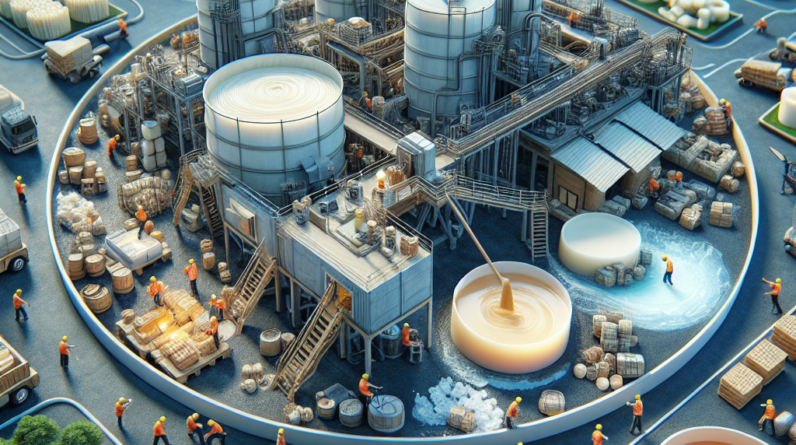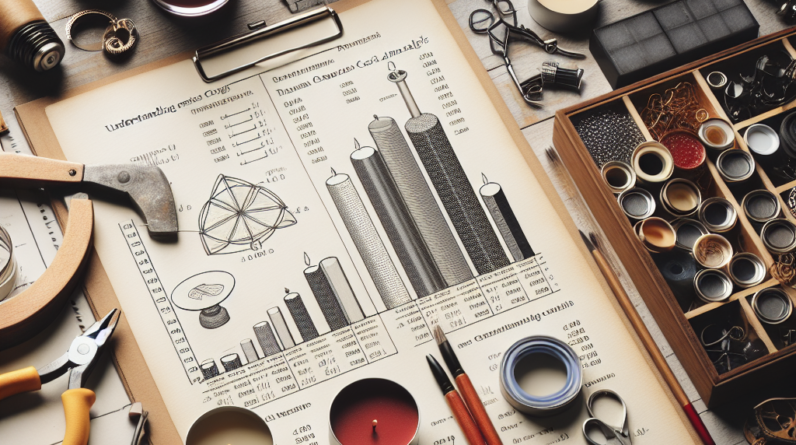
Conscious Sourcing of Raw Materials
Understanding Sustainable Materials
One of the first steps I took in maintaining a sustainable supply chain for my resin candle business was to dive deep into the materials I was using. I quickly realized not all resins are created equal. Some are derived from renewable resources and are less harmful to the environment. Educating myself about these materials has really opened my eyes to what options are available. It’s like discovering a treasure chest of eco-friendly goodies!
Once I figured out what materials were sustainable, I started seeking out suppliers who prioritize eco-friendliness. It felt so rewarding to connect with companies that share my values. Not only did I feel good about my choices, but it also allowed me to create candles that customers can feel good about buying. A win-win, right?
To take it a step further, I began looking for certifications and labels that indicated a product’s sustainability. These labels help consumers make informed choices and ensure I’m doing my part. It’s really about being transparent and showing my customers that I’ve done my homework!
Building Strong Relationships with Suppliers
Communication is Key
The importance of clear communication with my suppliers cannot be stressed enough. From the get-go, I made it a priority to openly discuss my sustainability goals and expectations. Sharing my mission has helped foster a genuine relationship with my suppliers, making it easier for both of us to work together in pursuit of eco-friendliness.
I’ve found that when I approach my suppliers as partners—rather than just vendors—they often go the extra mile. It might involve one supplier providing eco-friendly packaging or another sourcing raw materials with reduced carbon footprints. Building these relationships has not only enhanced my supply chain but also made my business more resilient and adaptable.
Regular check-ins with my suppliers also play a massive role. Through these conversations, I stay updated on their sustainability efforts and any challenges they might face. This has enabled us to innovate together, finding new ways to improve practices on both ends of the supply chain.
Implementing Efficient Logistics
Minimizing Carbon Footprint
Logistics can be a bit of a puzzle, but I found that optimizing this aspect is crucial for sustainability. One practical step I took was to streamline my shipping process. By consolidating shipments and planning my orders strategically, I’ve significantly reduced my carbon footprint. It’s amazing how small adjustments can create a big impact!
I also evaluated my transportation methods and opted for those that are less harmful to the planet. Whether it’s collaborating with eco-conscious logistics companies or exploring local delivery options, every effort counts towards reducing that overall footprint.
Another point I considered was packing materials. I made a commitment to use recyclable or biodegradable packaging, and I can confidently say that my customers appreciate this small detail. It aligns perfectly with the eco-friendly message I aim to communicate with my candles.
Fostering a Culture of Sustainability
Training and Engaging Employees
A sustainable supply chain doesn’t just depend on external factors; it thrives internally too! I made a conscious decision to train my employees about sustainability practices and the importance of our mission. By having everyone on the same page, our collective efforts towards this goal have become stronger and more efficient.
Additionally, engaging employees in the decision-making process adds a fun twist and allows for creative ideas. I’ve encouraged brainstorming sessions focused on sustainability, and you’d be shocked at how many innovative solutions we’ve come up with together!
Creating a culture of sustainability means celebrating our successes together. Whenever we hit a goal or make a positive change, I make sure to acknowledge the hard work put in by my team. Celebrating these moments boosts morale and inspires everyone to keep pushing for even greater sustainability efforts.
Monitoring and Improving Practices
Continuous Feedback Loop
Staying sustainable is not a one-and-done deal; it’s a continuous journey. I established methods to monitor our supply chain practices consistently, always looking for areas of improvement. Implementing a feedback loop has significantly helped in refining our processes over time. The beauty of feedback is that it can come from anywhere—suppliers, employees, or even customers.
I also keep track of sustainability metrics to measure our progress. Analyzing these metrics gives me insights into what’s working and what still needs tweaking. This ongoing analysis builds a clearer picture of how we’re impacting the environment and how we can reduce that impact further.
I’m a firm believer in experimentation. Don’t be afraid to try out new ideas and initiatives. Sometimes you’ll hit a home run, other times it might flop, but that’s okay! Each experience is a learning opportunity that pushes us towards a more sustainable future.
FAQ
1. Why is it important to source sustainable materials for resin candle making?
Sourcing sustainable materials helps protect the environment, ensuring that the resources are renewable and have minimal negative impact. This aligns with the growing consumer demand for eco-friendly products and helps build a loyal customer base.
2. How can I build strong relationships with my suppliers?
Open and honest communication is essential. Engage in discussions about your sustainability goals, maintain regular check-ins, and approach your suppliers as partners rather than just vendors. This builds trust and encourages collaborative sustainability efforts.
3. What are some efficient logistics practices to consider?
Streamlining shipment processes, opting for eco-friendly transportation, and using sustainable packing materials are all effective logistics practices. Consolidating shipments can also greatly reduce your carbon footprint.
4. How do I foster a culture of sustainability in my business?
Train and engage your employees on sustainability practices, involve them in decision-making, and celebrate your collective efforts and successes. This creates a shared commitment to sustainability within your team.
5. How can I continuously improve my sustainability practices?
Establish a feedback loop for monitoring practices, track sustainability metrics, and remain open to experimenting with new ideas. Continuous learning and adapting will help you stay on the right path for sustainable growth.






